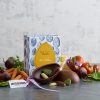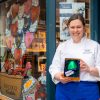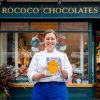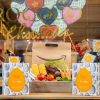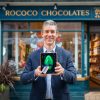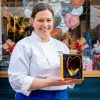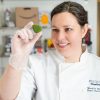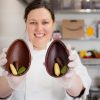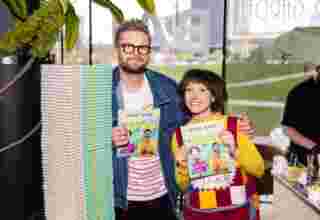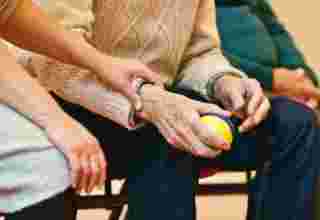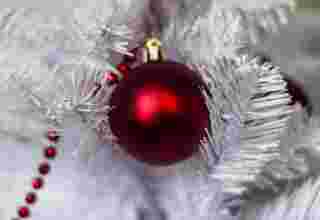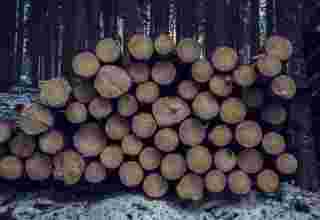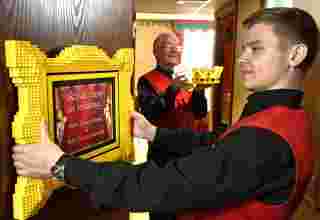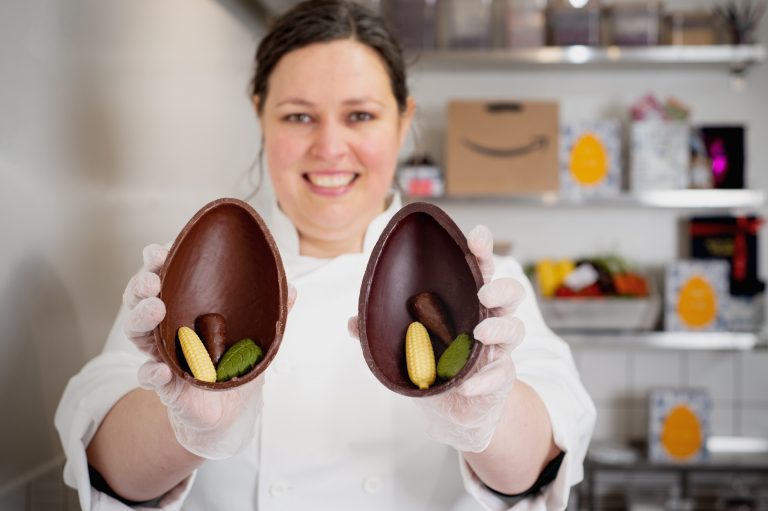
The vEGGie, made by London-based Rococo Chocolates, is accompanied by six vegetable-shaped chocolates in three flavours.
While not quite one of your five-a-day, the unusual-flavoured egg has been designed as an alternative for customers looking for something a little different this Easter.
The one-of-a-kind treat, which is sold exclusively on Amazon.co.uk/veggie, is made by hand in small batches in Rococo’s London kitchen using quality, ethically sourced ingredients and crafted with minimal processing to ensure its exquisite taste.
Mireille Discher, head chocolatier at Rococo Chocolates, said: “Flavour is at the heart of our craft, and we always strive to create innovative new products that push the boundaries of chocolate.
“We welcomed Amazon’s challenge to create The vEGGie, incorporating five popular vegetables with our signature vegan chocolate to make a tasty and intriguing treat.
“You really can taste the underlying vegetables, and we’re excited to hear what people think about it.”
The company has been making chocolate for more than 38 years for its five London stores.
The egg is housed in a sustainably sourced box, made in the UK, which is decorated with Rococo’s design.
James Bate, director of grocery at Amazon.co.uk, said: “This Easter, we’re delighted to team up with small British chocolatier, Rococo Chocolates, to launch The vEGGie, a must-try for those with adventurous palettes.
“Whether you’re a committed vegan or fancy a blind taste test with your family, The vEGGie is sure to make it a memorable egg hunt.”
Rococo Chocolates is also offering a range of other Easter treats on Amazon.co.uk, including its Dark Chocolate Egg with Rose and Violet Creams, and Milk Chocolate Honeycomb Egg with Honeycomb Chunks.
jQuery(document).ready(function($) {
// We only want these styles applied when javascript is enabled
$(‘.gal_content’).css(‘display’, ‘block’);
// Initialize Advanced Galleriffic Gallery
var gallery = $(‘#thumbs_45472_1’).galleriffic({
delay: 3500,
numThumbs: 12,
preloadAhead: 12,
enableTopPager: false,
enableBottomPager: false,
imageContainerSel: ‘#slideshow_45472_1’,
controlsContainerSel: ‘#controls_45472_1’,
captionContainerSel: ‘#caption_45472_1’,
loadingContainerSel: ‘#loading_45472_1’,
renderSSControls: true,
renderNavControls: false,
playLinkText: ‘Play Slideshow’,
pauseLinkText: ‘Pause Slideshow’,
enableHistory: 0,
autoStart: 0,
enableKeyboardNavigation: true,
syncTransitions: false,
defaultTransitionDuration: 300,
onTransitionOut: function(slide, caption, isSync, callback) {
slide.fadeTo(this.getDefaultTransitionDuration(isSync), 0.0, callback);
caption.fadeTo(this.getDefaultTransitionDuration(isSync), 0.0);
},
onTransitionIn: function(slide, caption, isSync) {
var duration = this.getDefaultTransitionDuration(isSync);
slide.fadeTo(duration, 1.0);
// Position the caption at the bottom of the image and set its opacity
var slideImage = slide.find(‘img’);
caption.fadeTo(duration, 1.0);
},
onPageTransitionOut: function(callback) {
//this.hide();
setTimeout(callback, 100); // wait a bit
},
onPageTransitionIn: function() {
var prevPageLink = this.find(‘a.prev’).css({‘opacity’: ‘0.3’ , ‘display’ : ‘inline-block’, ‘cursor’ : ‘default’});
var nextPageLink = this.find(‘a.next’).css({‘opacity’: ‘0.3’ , ‘display’ : ‘inline-block’, ‘cursor’ : ‘default’});
// Show appropriate next / prev page links
if (this.displayedPage > 0)
prevPageLink.css({‘opacity’ : ‘1’ , ‘display’ : ‘inline-block’, ‘cursor’ : ‘pointer’});
var lastPage = this.getNumPages() – 1;
if (this.displayedPage < lastPage)
nextPageLink.css({'opacity' : '1' , 'display' : 'inline-block', 'cursor' : 'pointer'});
this.fadeTo('fast', 1.0);
}
});
/**************** Event handlers for custom next / prev page links **********************/
gallery.find('a.prev').click(function(e) {
gallery.previousPage();
e.preventDefault();
});
gallery.find('a.next').click(function(e) {
gallery.nextPage();
e.preventDefault();
});
});
ENDS


